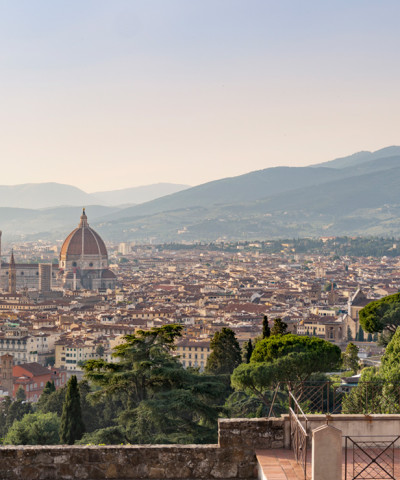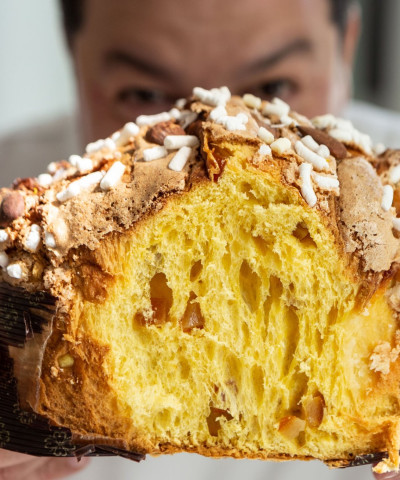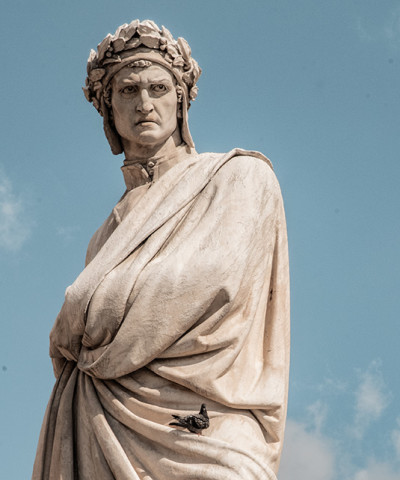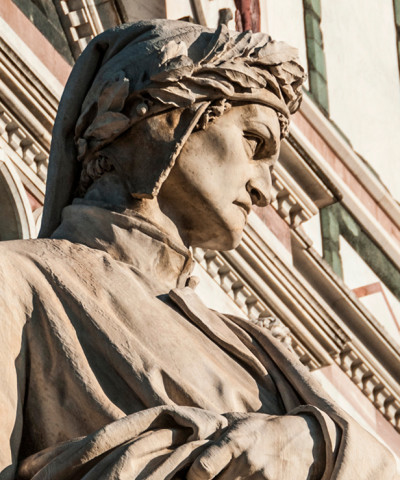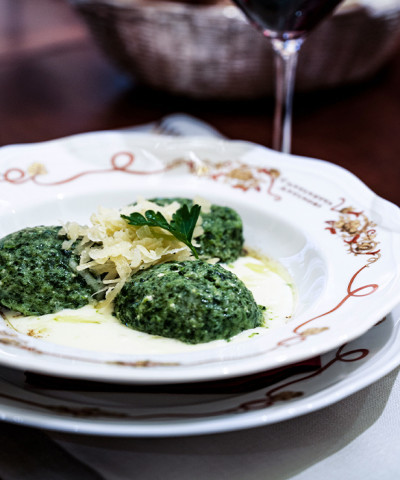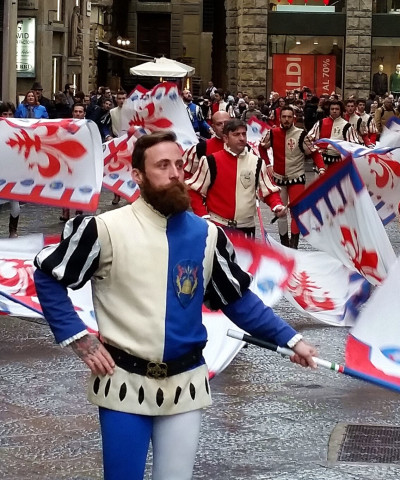The most beautiful churches in Florence to absolutely visit
Must-see basilicas and masterpieces to admire and discover all the beauty in the city
In Florence, beauty has always been a magnificent tussle, in which the most important Corporations and wealthy noble families took turns in the field to leave indelible traces of their earthly passage: the Arte della Lana for the dawn of the Duomo, a string of Corporations in Orsamichele, but also the Rucellai in Santa Maria Novella and the Medici for the superb Chapel of the Princes...just to name a few examples. Beneath these vaults, supported by columns and capitals, a thousand stories that enthrall like a novel, to which a city unique in its charm and beauty acts as a backdrop. We enter the magnificent cathedrals, symbols of religious participation but also treasure chests of culture and art.
If you're looking for must-visit museums in Florence, click here; while here you'll find 20 beautiful outdoor monuments to see. Here, instead, a tour among the lesser-known but worthwhile churches in the city.
SANTA MARIA DEL FIORE
It is a must to start with Santa Maria del Fiore: the cathedral complex includes the Baptistery (you can read our in-depth study here), of medieval origin, and Giotto's Bell Tower. The three buildings are part of the UNESCO World Heritage Site.
Construction of the Duomo Di Firenze began in 1296 on the foundations of an earlier cathedral dedicated to Santa Reparata to a design by Arnolfo di Cambio: three wide naves ending under an octagonal dome. After Arnolfo's death in 1302, work proceeded slowly, until in 1331 the Arte della Lana commissioned Giotto to supervise the work. Assisted by Andrea Pisano,Giotto continued Arnolfo's work: his major contribution was the creation of the magnificent bell tower.When he died in 1337, Andrea Pisano succeeded him until the outbreak of the Black Death in 1348. By 1349 Francesco Talenti finished Giotto's campanile and expanded the original design to include the apse and side chapels. By 1418 only the dome was incomplete: it remained so for 122 years
With its diameter of 45.5 meters and a total height of more than 116 meters, it is the largest masonry vault in the world. It came between 1420 and 1436 by Filippo Brunelleschi, following the design he submitted to the competition held by the Opera in 1418.
Different vicissitudes affect the façade: the original design - by Arnolfo but only partially realized by several artists, including Andrea Orcagna and Taddeo Gaddi - is dismantled in 1587-88 by architect Bernardo Buontalenti by order of Grand Duke Francesco I de' Medici. The new façade was not completed until 1887 to a design by Emilio De Fabbris, in Neo-Gothic style with a riot of black, green and white marble. A 1:1 scale reconstruction of the original facade is preserved in the nearby Museo dell'Opera del Duomo, where the original 16th-century statues and three of the original doors of the Baptistery are also preserved in a splendid display.
The interior of Santa Maria del Fiore is enormous in size: 153 meters long and 38 meters wide, which becomes 90 at the intersection with the transept. The cathedral of Florence contains the most important complex of stained glass windows made in Italy between the 14th and 15th centuries, created by the greatest Florentine artists of the Middle Ages, such as Donatello, Lorenzo Ghiberti, Paolo Uccello and Andrea del Castagno.
SANTA MARIA NOVELLA
Santa Maria Novella grew out of the ashes of Santa Maria tra le Vigne, an oratory outside the city where the Dominicans settled in the early decades of the 1200s. St. Dominic himself is said to have chosen it, to the west. Exactly on the opposite side where the followers of St. Francis had settled.
The church was first built with an East-West orientation, as tradition dictated. But then since the sermons of Peter of Verona, a former Cathar, were so well attended and crowded that the municipality gave the friars the area toward the Arno. Thus, in the years 1276-77 the construction of the city's first great Gothic church with its cross vaults, mighty pillars, stained glass windows, and frescoes was begun
The lower part of the white, green and red marble facade is believed to have been executed by the Dominican architect, Friar Iacopo Talenti da Nipozzano. The upper part was completed only a hundred years later, in 1470, by Leon Battista Alberti, with its distinctive geometric decorations depicting the emblem of a sail in the wind, the symbol of the wealthy Rucellai merchant family. The same symbol, which can be seen on the facade of the Rucellai palace and loggia, as well as on the small temple of the Holy Sepulcher in San Pancrazio, also appears on the corner pillars. On the upper lintel stands an inscription commemorating the benefactor and a symbolic year of completion (precisely 1470): IOHA(N) NES ORICELLARIUS PAV(LI) F(ILIUS) AN(NO) SAL(VTIS) MCDLXX (Giovanni Rucellai, son of Paolo).
The vast and grand interior is a veritable treasure chest of art that includes frescoes by Ghirlandaio, Filippino Lippi and Andrea Orcagna, Giotto's great crucifix and Masaccio's famous Divine Trinity. Many of these masterpieces in the nineteenth-century restorations after Vasari had implemented the reorganization of the Conventual Churches desired by Cosimo I according to the dictates of the Council of Trent. These churches had the space of the friars distinct from that of the laity and divided by a wall, the partition, that covered the altar. Unacceptable to the Counter-Reformation and which would lead Cosimo I, certain of thus obtaining the title of grand duke from the pope, to comply immediately. Around the transept are the chapels: the Cappella Maggiore or Tornabuoni Chapel is in the center of the church behind the high altar. The central Crucifix is a work by Giambologna. The choir contains a very important cycle of frescoes by Domenico Ghirlandaio, on which a very young Michelangelo Buonarroti, then in his workshop, probably also worked. The polychrome stained-glass windows were executed in 1492 by Alessandro Agolanti to a design by Ghirlandaio.
To the right of the Cappella Maggiore, the Cappella di Filippo Strozzi contains an extraordinary cycle of frescoes by Filippino Lippi, with stories from the lives of St. Philip the Apostle and St. John the Evangelist (finished before 1502). The Bardi Chapel, dedicated to St. Gregory, is the second on the right and belonged to the Compagnia della Laudi of Santa Maria Novella. The Rucellai Chapel is in an elevated position at the end of the right arm of the transept and dates from the 14th century. It houses a marble statue of Madonna and Child by Nino Pisano from the mid-14th century. To the left of the main chapel is the Gondi Chapel, designed by Giuliano da Sangallo (1503), which houses Filippo Brunelleschi's Crucifix, the only known wooden sculpture by the great Florentine architect. Next is the Gaddi Chapel, by Giovanni Antonio Dosio (1575-1577), admired by his contemporaries as the first Florentine chapel encrusted with marble and semiprecious stone commissions. There are paintings and frescoes by Bronzino and his pupil Alessandro Allori, as well as bas-reliefs by Giovanni Bandini. At the end of the left arm of the transept, in an elevated position symmetrically to the Rucellai Chapel, is the Strozzi Chapel of Mantua, to distinguish it from that of Filippo Strozzi. This, too, is covered with fine frescoes, dating from 1350-57, among the best works of Nardo di Cione (brother of Andrea Orcagna). Since January, an important new development: Santa Maria Novella has housed the new deposits of the Florentine civic museums, a space that is almost a museum where one can admire many works of art that until now have remained hidden from the public for lack of adequate space for their enjoyment. The storerooms are housed in a part of the building bordering the western arm of the Chiostro Grande. A variety of functions have been performed in these ancient rooms over the centuries. The storerooms occupy an area of 1100 square metres, arranged on three floors.
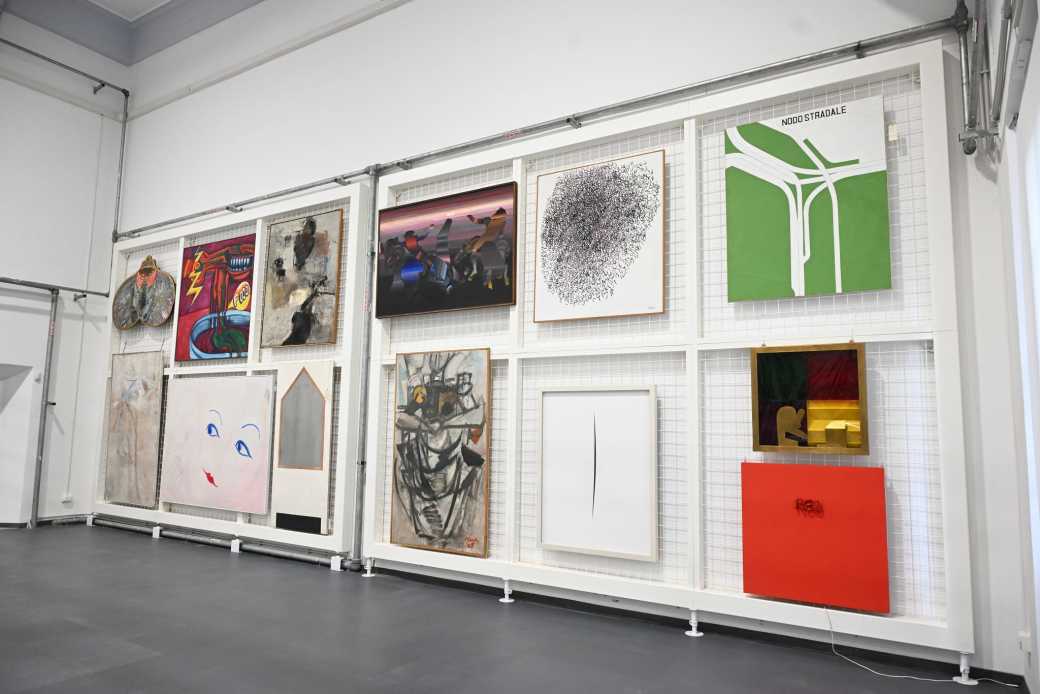 Civic Museum
Civic MuseumHere is our in-depth itinerary of the Basilica of Santa Maria Novella!
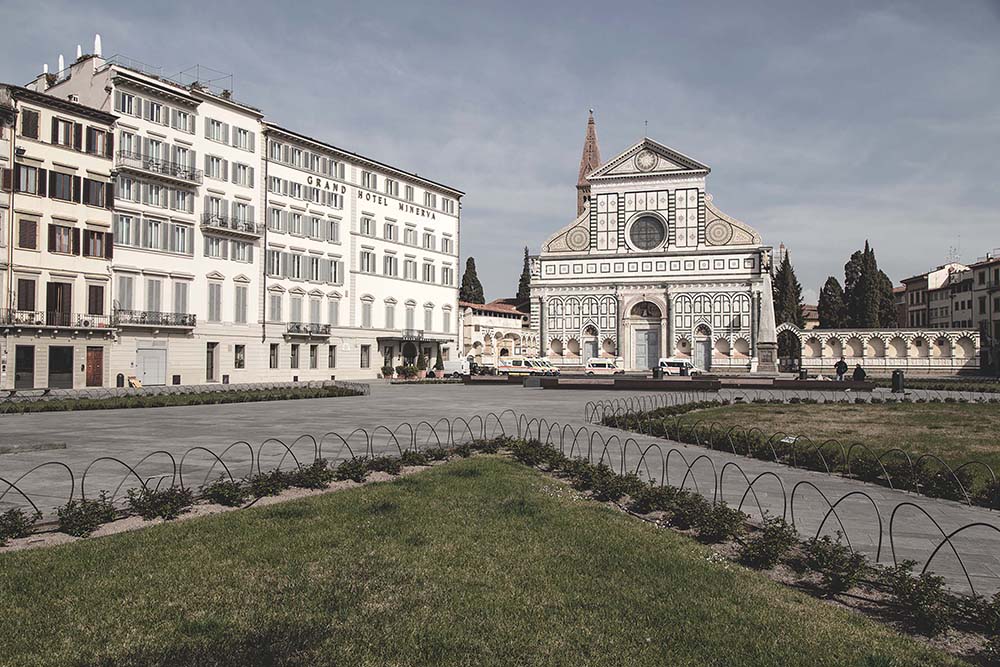 Piazza Santa Maria Novella (ph. Helene Vallet)
Piazza Santa Maria Novella (ph. Helene Vallet)SANTA CROCE
The basilica of Santa Croce is one of the greatest achievements of Gothic in Italy and a temple of Itale glorie for the many burials of supreme artists, men of letters and scientists it contains. Worth seeing? The Pazzi Chapel at the end of the cloister would be enough. But we cannot stop here if in the Niccolini Chapel, Stendhal had an illness, which later became his famous syndrome, and De Chirico, just coming out of a long convalescence, sat on a bench in front of the facade and painted his first metaphysical painting, The Enigma of an Autumn Afternoon. A curiosity inside: a local Lady Liberty, in every way similar to the one in NY signed by Florentine sculptor Pio Fedi. One ventures to speculate: in 1875 in Florence the star of the moment was the sculptor from Viterbo but by then adopted by the city, Pio Fedi, fresh from his great success with the Rape of Polyxena. He was entrusted with the design of a solemn funeral monument in homage to the playwright Giovan Battista Niccolini to be placed on his tomb in the basilica of Santa Croce. Pio Fedi's plaster sketch shows a draped female figure holding a laurel wreath, a clear allegory of Poetry.
In the same years, during a trip to Florence, the famous French architect Eugene Viollet le Duc is accompanied by his best pupil: Frédéric-Auguste Bartholdi.
We do not know if the two French architects ever had contact with Pio Fedi, but they are all connected with Masonic lodges, so a meeting between them in Florence seems quite likely. In 1877 Pio Fedi's The Freedom of Poetry was already finished but because of some municipal problems it remained for several years closed in its atelièr in Via dei Serragli until, in May 1883, it was finally placed in the Basilica of Santa Croce and inaugurated. Three years later another major unveiling on a small island at the entrance to the Hudson River harbor in the middle of Manhattan Bay displays a second imposing statue, signed Bartholdi precisely, which the French gave to America in commemoration of the Declaration of Independence a century earlier.
Here is our in-depth itinerary of the Basilica of Santa Croce!
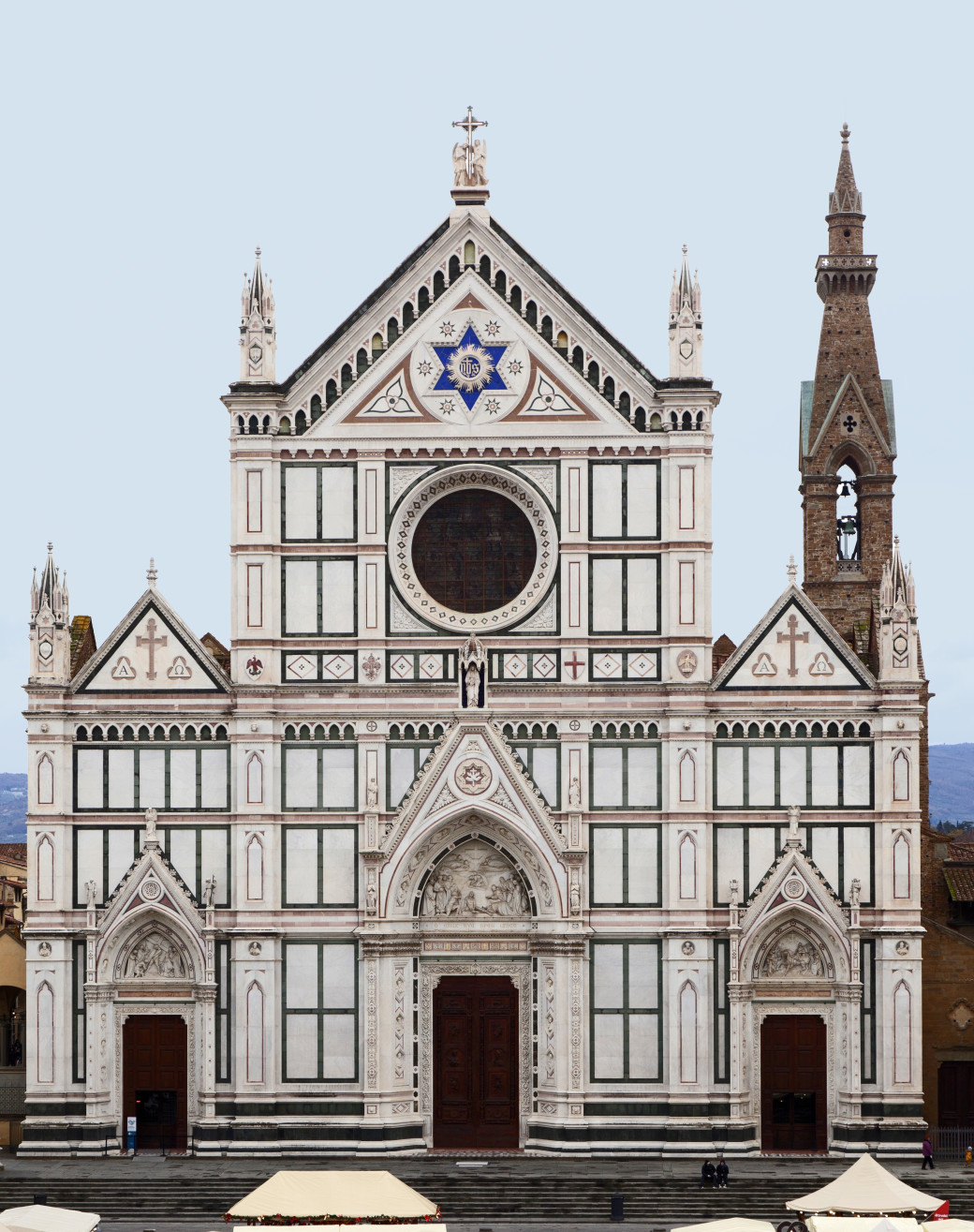 Santa Croce (ph. Pierpaolo Pagano)
Santa Croce (ph. Pierpaolo Pagano)SANTA MARIA DEL CARMINE
The church that dominates the square of the same name in the Oltrarno district was founded by a group of friars who came from Pisa in 1268. Work was carried on with contributions from the wealthiest Florentine families and ended only in 1475, leaving the facade unfinished as we see it today. Modified at the end of the 1500s to a design by Vasari and at the behest of Cosimo I, based on the dictates imposed by the Council of Trent, it was destroyed by a terrible fire in 1771. It was spared the ancient Sacristy (decorated with early 15th-century frescoes), the Brancacci Chapel and the Corsini Chapel (1675-1683), a rare example of Roman Baroque in Florence. Within a few years the church was completely renovated in the late Baroque style, taking on the appearance that still characterizes it today. The famous cycle of frescoes in the chapel founded by the Brancacci family in the late 14th century is owed to the wealthy merchant Felice Brancacci, who commissioned them in 1423 on his return from Egypt. Masolino and Masaccio worked together on the Stories of St. Peter, the saint for whom the chapel was originally named; due to the former's departure for Hungary and the latter's departure for Rome, however, the frescoes remained unfinished in 1427. Following the exile of Brancacci (1436), who had fallen into disgrace for his anti-Medicean sympathies, the friars of the convent had the portraits of all the people connected with his family erased. Only in the years 1481-1483 did Filippino Lippi complete the missing scenes.
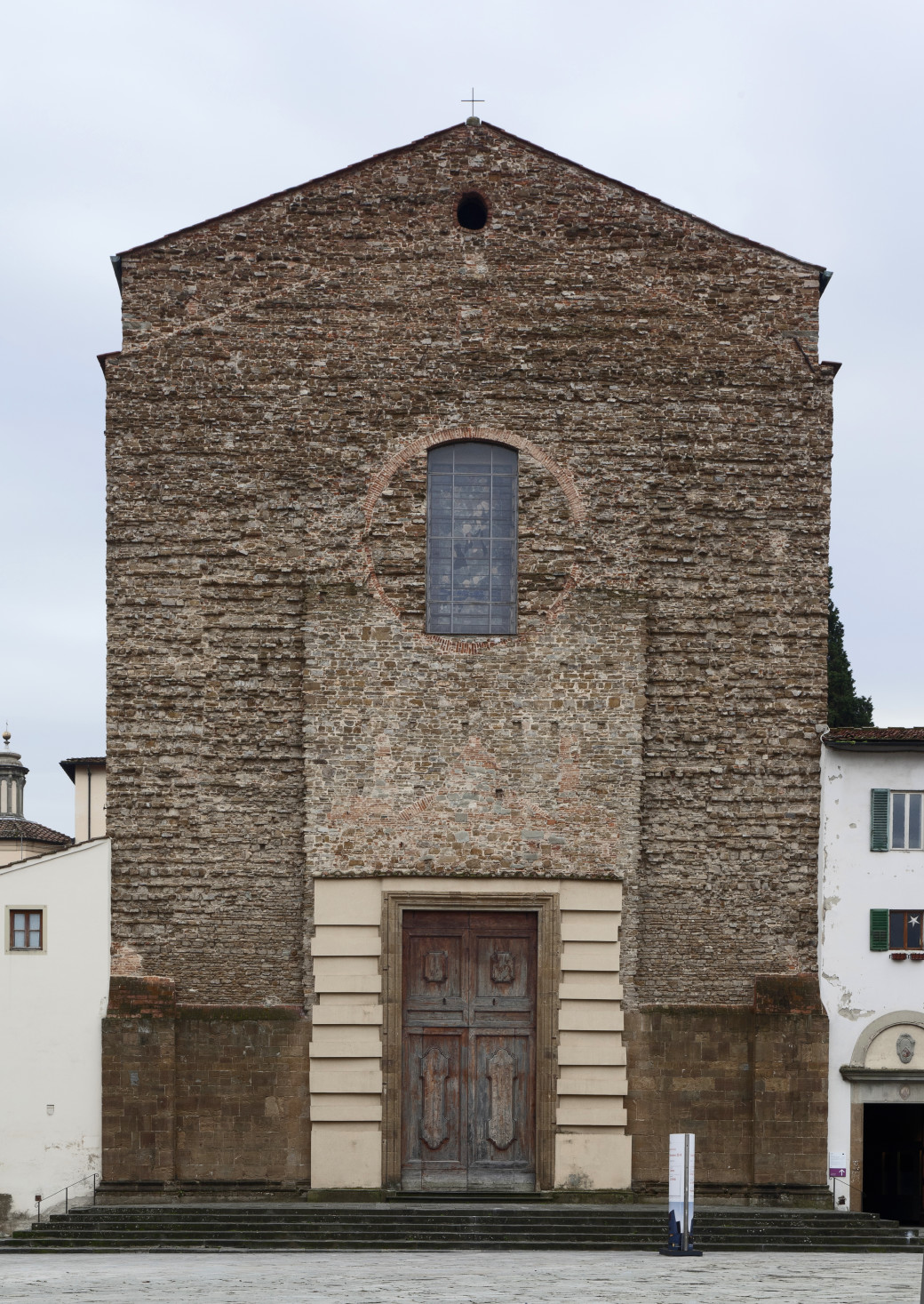 Chiesa di Santa Maria del Carmine
Chiesa di Santa Maria del CarmineCHIESA OF SANTO SPIRITO
Also in Oltrarno, one of the main basilicas of the early Renaissance: Santo Spirito, the last masterpiece of Renaissance architecture by Filippo Brunelleschi. Its pietra serena columns decorated with Corinthian capitals divide the space, achieving perfect balance. The ribbed vaults that stop the eye in a streamlined and harmonious perspective convey a feeling of freedom and peace. One of the artists who contributed most to the majesty of the church was Michelangelo, who during his youthful studies received the opportunity to enjoy the splendor of the basilica to the point of drawing inspiration from it for one of his most significant works, the Wooden Crucifix. The walk through the Basilica begins in the right aisle, where we meet artists such as Pier Francesco Foschi, Jacopo Sansovino, and Giovanni Baratta. Moving toward the transept we are faced with eight chapels placed according to a classical architectural scheme. The work that stands out at first glance is certainly placed in the Nerli chapel: the Nerli Altarpiece, Madonna and Child with Saints John, Martin and Catherine of Allesandria) by Filippo Lippi, which depicts a view of the historic district of San Frediano, is certainly one of the most famous works inside the basilica. Continuing along the path we come across one of the basilica's most majestic chapels, that of the Frescobaldi, Cini, Dainelli da Bagnano. Inside is the altarpiece of Christ and the Adulteress by Alessandro Allori, signed and dated 1577, with a portrait of the Da Bagnano family in the predella. Also of great impact is the Corbinelli Chapel, which shows all the refinement and virtuosity of Andrea Sansovino with its union of architecture and sculpture. . The tour inside the basilica ends with the left aisle, which houses works by artists of the stature of Michele di Ridolfo del Ghirlandaio, Taddeo Landini up to Pier Francesco Foschi, with whom we conclude our walk inside the basilica.
The monumental complex of santo spirito also offers an exclusive space dedicated to the Augustinian museum itinerary where Michelangelo's Crucifix is preserved.
Here is our in-depth itinerary of the Basilica of Santo Spirito!
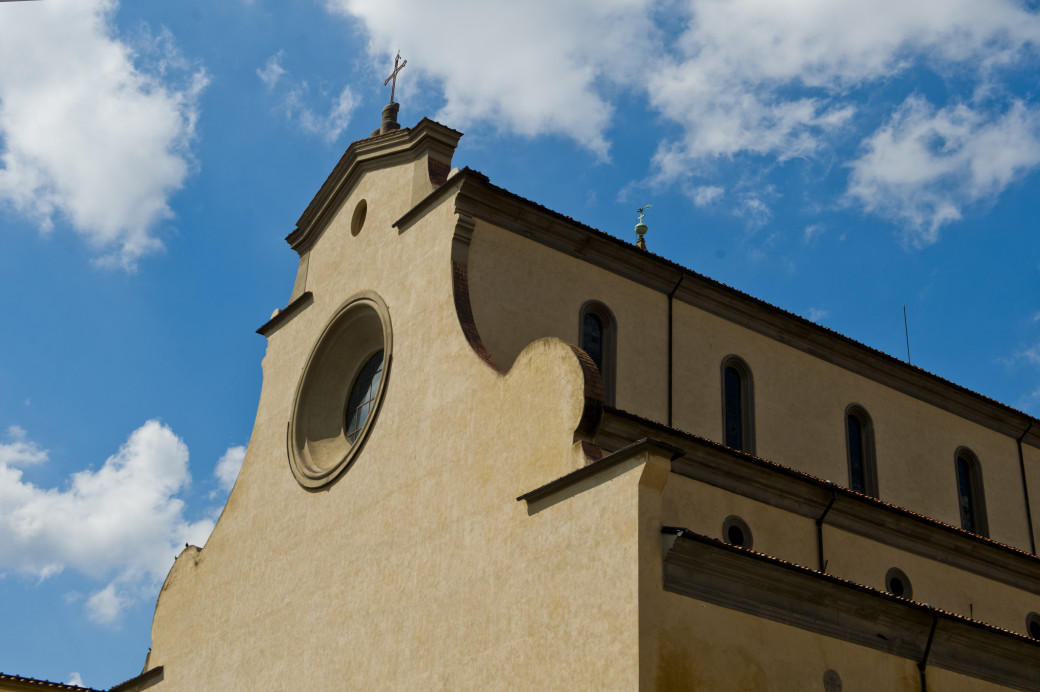 Santo Spirito
Santo SpiritoSAN LORENZO
It is the oldest church in Florence. It was consecrated in 393 by St. Ambrose. The current architectural layout is due to Brunelleschi. A complex masterpiece of the Renaissance, it consists of 3 splendid buildings: the Basilica, the Laurentian Library and the Chapels. The Old Sacristy was the first part of San Lorenzo to be completed by the renowned architect at the behest of the Medici, who wished to build their mausoleum there. At the back of the church, with access onto Piazza Madonna degli Aldobrandini, are the grand Medici Chapels emblematic realization of the Florentine family's self-celebration.
The complex includes the Mausoleum of the Princes and Michelangelo's New Sacristy conceived as a funerary chapel for the Medici family. Thought of as early as Pope Leo X, the New Sacristy was not actually begun until 1520 at the behest of the second Medici Pope, Clement VII. Michelangelo devoted himself to its realization until 1534, the year of his final move to Rome. Adopting the architectural model of the Old Sacristy, Michelangelo built a cubic room surmounted by a hemispherical dome in which the architectural elements are highlighted by the use of pietra serena. However, the space is enlivened by a new plastic conception in which the two-tone interplay between the gray stone framework and the plastered surface enhances the drama of the sculptural groups of the two funerary monuments.
The Chapel of the Princes, on the other hand, was conceived by Cosimo I as early as 1568, but its construction did not begin until 1602 under Ferdinand I. The grand dukes wanted to cover the walls of their mausoleum with the most precious and incorruptible materials: polychrome marble and granite, jaspers, alabasters and lapis lazuli, and even coral and mother-of-pearl.The Opificio delle Pietre Dure, founded in 1588 by Ferdinando I, in fact devoted much of its activity for centuries to the decoration of the Chapel of the Princes. In fact, the costly work proceeded extremely slowly, draining the financial resources of the grand duchy until Anna Maria Luisa de' Medici, the last heir of a dynasty that would die out with her, impressed a decisive acceleration on the work site, delivering to history the last grandiose fruit of Medici patronage. Look up and enjoy this marvelous scenic effect.
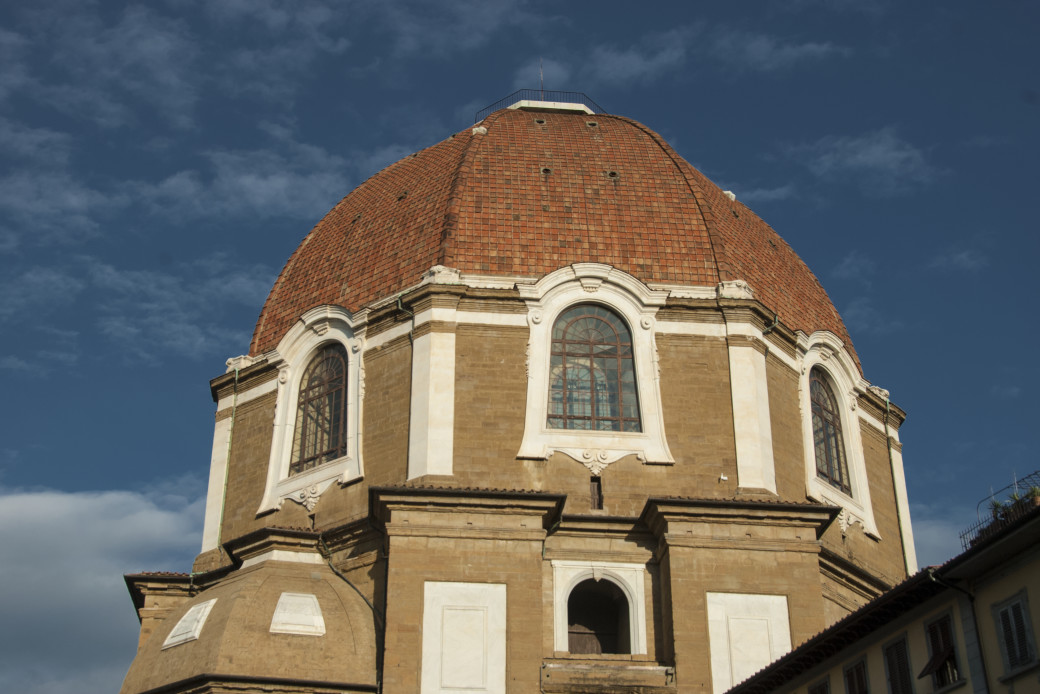 San Lorenzo
San LorenzoCHURCH OF SAN MINIATO AL MONTE
Built between the 11th and 13th centuries, the exterior of the abbey is decorated with green and white marble in geometric patterns, similar to those on the facades of Santa Croce and Santa Maria Novella. The interior is Romanesque in style with three naves. From the square in front, there is a beautiful view of Florence, from the Duomo to Palazzo Vecchio and the walls that surrounded Florence.
Here is our more in-depth tour inside the Church of San Miniato al Monte!
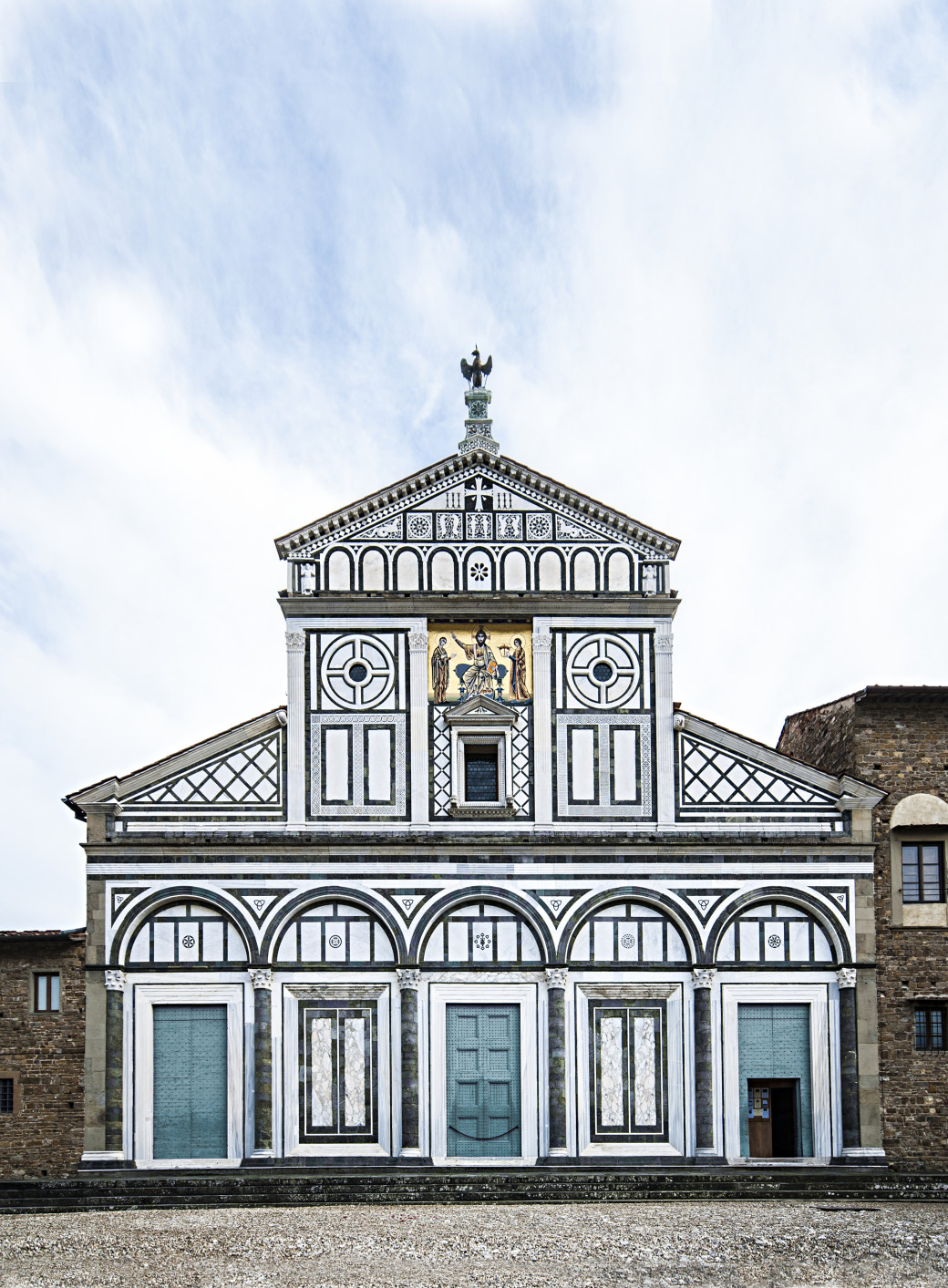 San Miniato
San Miniato








